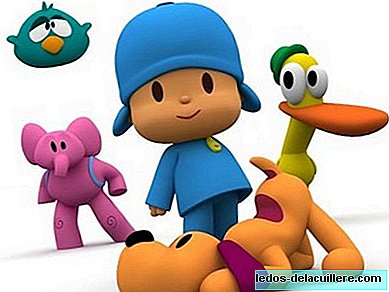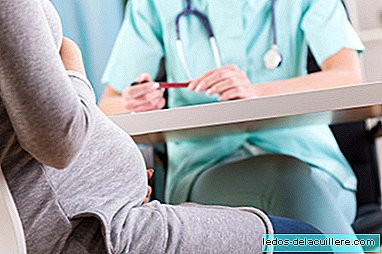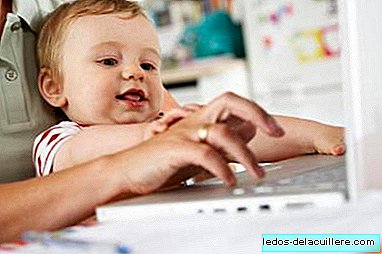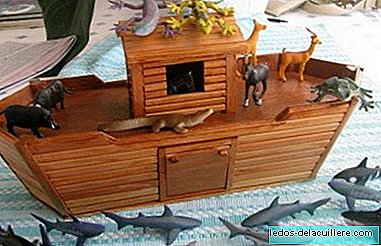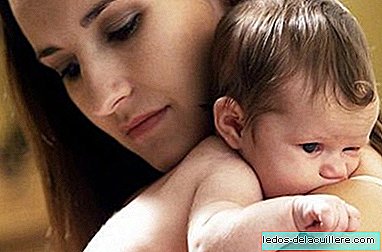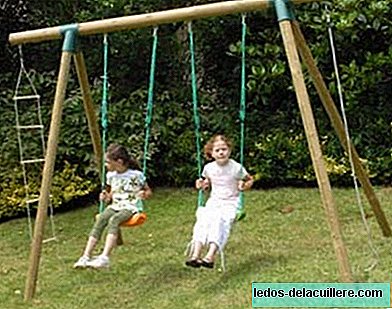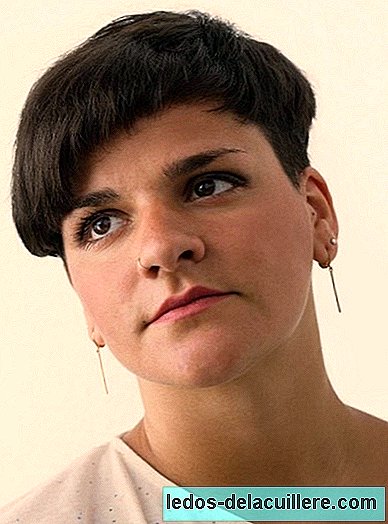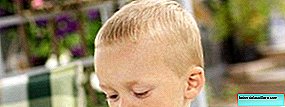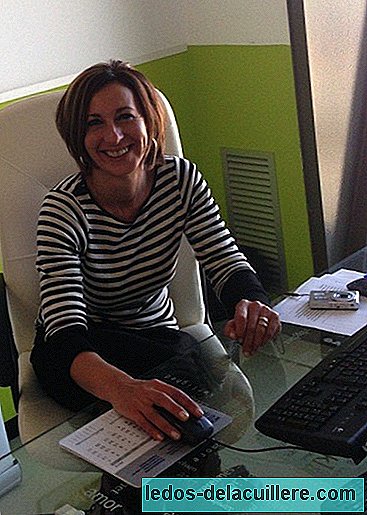
Today we have M. Angeles Miranda, who is expert in accident prevention and road safety, has specialized in facilities for children, creating child safety audits / child risk assessments, in educational and leisure centers, in addition to the S + Quality Seal. Our guest is also a Founding Partner and Vice President of the National Child Safety Association and a member of the Technical Committee for Standardization AEN / CTN 172 / SC4 Material, services and centers for children.
Since 1990 I have dedicated my professional life to the world of children, after a long way of training in different fields, my goals driven by an overflowing passion for my work focus on the specialty of safety and prevention of child accidents
In his credit he has other merits that give us a lot of confidence, and that is why we have asked him to talk about Child Safety, an issue as important as sometimes forgotten.
Accidents are the leading cause of infant mortality in developed countries
Peques and More.- Summer is probably the time when more child accidents happen due to various circumstances, is that so? And, aside from the summer season, what are the three types of accidents that most frequently occur during childhood?
M. Angeles Miranda.- Indeed, during the summer, child accidents increase by 20%. Holidays, relaxation, the increase in car journeys and, above all, do not prevent risk situations in unknown or unusual environments such as holiday destinations, are the causes of this growth.
As for the most frequent accidents in childhood, these are:
Falls at the same or different level: Risk factors include periods of evolutionary transition (motor development, skills acquisition), and children's curiosity.
Choking by immersion and / or foreign body obstruction, the lack of supervision and education are the main agents that occur.
Intoxications, children are curious by nature, the lack of devices to prevent access to toxic substances gives the child free way to experiment.
Health policies that create adequate spaces for children should be promoted
In all of them, space adaptation and adult supervision are the most effective prevention measures. With both we can get children to develop without risks: they must fall, but without serious consequences, they must enjoy elements such as water, but without risks, they must investigate, touch, test, etc., but with elements appropriate to their needs.
PyM.- An accident is an unforeseen event, of course, but do you think it is possible to reduce the amount of child accidents that occur, and even minimize the consequences through prevention?
MAM.- According to the WHO “An accident is an eventual, anomalous and involuntary event which results in physical or psychological damage, as a result of a lack of prevention or safety defect”.
From this definition we can conclude that with preventive measures that eliminate the risk or minimize the consequences, accidents are avoidable. In the case of children, the characteristics and needs of children, depending on their evolutionary development, must be incorporated into prevention in order to adopt the most effective solutions.
PyM.- Are the volume of accidents and their consequences worrying in the countries around us? Whose responsibility is it to avoid, prevent, influence (families, governments, education system, society ...).
Einstein said that “Setting an example is not a way of educating, it is the only way”
The accidents are the leading cause of infant mortality in developed countries like ours. To this data we must add the consequences to realize the magnitude of the problem: According to data from the European Child Safety Alliance (ECSA), 70% of childhood accidents require some type of care or cure, within this group between 30 % and 48% also need transfer and assistance in a hospital, the same sources indicate that for each deceased child, 160 children need hospital admission and 2000 are treated in the emergency pediatric services.
The tribute to pay for child accidents is not here, because in addition to the figures resulting in health expenditure, other expenses and moral damages should be added such as the years of life potentially lost in case of deaths, limitations, handicaps, disfigurements, amputations, psychological effects, moral and physical sufferings, both of children such as family members and caregivers, truancy, work absenteeism of families that take care of their recovery, etc.
Avoiding these figures and their consequences is a cultural problem that must be corrected. through awareness and incorporating the preventive culture naturally in our lives, leaving behind “it won't happen to me” for self-protection.
TO legislative level We have two examples in which to look for the excellent results obtained by considerably reducing the accident rate in both cases:
On the one hand the LPRL, the starting point to generate a preventive culture at work as a right, to the point that workers value their centers and positions as safe and therefore healthy.
On the other hand, strict traffic regulations, based on economic penalties and points, have led to greater awareness of the risks of carrying a steering wheel. With these two examples it is determined that the responsibility belongs to everyone, by those responsible for legislating, should be promoted health policies that create adequate spaces for childrenOn the part of the families we must be aware that a child accident is not a fortuitous event, acquiring preventive measures are avoidable, educating future generations will incorporate this culture in a natural way.
Peques and More.- Now, classes have begun and parents' interests are moving, also worries; Children spend a lot of time in school, but they must also reach it. How do you value from the association the security of access to schools in our country? What conditions must they meet so that the entrances / exits of the school are safe?
MAM.- Only 3 out of 10 Spanish schools have a safe environment, most of the accesses follow the same pattern as the cities: they are made by and for adults, prevailing the car to the pedestrian, for this reason, mostly families today take children to school in this transport system, is the consequence of this urban structure.
Luckily more and more it tries to pacify the traffic creating more habitable spaces, from the association, we promote and promote this transformation, although many times we encounter new structural challenges that continue without taking into account the needs of minors. A city without children, is a dangerous city, otherwise the whole society wins (pedestrians, elderly, disabled, etc).
Regarding the security requirements so that the entrances of the schools (and centers destined for children) are safe, we have a specific decalogue where the needs and characteristics of the children's group are taken into account.
We greatly emphasize the importance of Child road safety is a shared responsibility of the municipalities, centers and, of course, of the families that since they were very young accompany them daily at the entrances and exits. Consider the impact of a child who has just received a driver's education when he leaves the center, the adult waits for him in the third row, impeding traffic and passing him between cars to reach him. Adults should be aware of the impact that our behavior model has on our children, the coherence of criteria between what we say and what we do should be the basis of prevention training, in any of the areas in which it develops the child.  PyM- What pending subject do our schools have regarding child safety?
Only 3 out of 10 Spanish schools have a safe environment, most of the accesses follow the same pattern as the cities: they are made by and for adults, the car prevailing to the pedestrian
MAM.- Child safety centers are governed by generalized regulations that are not effective depending on the center and the age of the children it receives. Those responsible for the centers and services for children are specialists in educating, managing, etc., in the same way that the school must outsource to specialists in the prevention of occupational hazards, as established by current legislation on occupational safety, This same center does not bring together professionals for the prevention of childhood accidents, when children are users of the school as the workers themselves.
From the National Child Safety Association we believe that The same effectiveness that the regulations on occupational hazards offer us should be applied to childrenFor this reason, we promote child risk audits, always from a positive perspective, analyzing the facilities, habits, age range, activities offered, secure centers are adapted and adapted to the needs of children and the installation, achieving also many more benefits for all users.
PyM- Taking into account on the other hand that the children spend part of their time also in other contexts according to age (parks, walks with friends by bicycle, etc.), what specific aspects related to security should concern us more to parents?
MAM.- Again we mark the relevance of the base that will generate preventive culture in our children, and that is that as in everything, the seeds that we are planting in children will germinate as it acquires autonomy.
I would like to illustrate it with a representative and very current example lately: when we go out with our young children by bicycle, we wear them with a safety helmet, however due to social culture or lack of regulations, adults generally dispense with this protection system . This contradiction means that as the child becomes more autonomous and can go out alone with the bicycle, he will not use the helmet, is what we have instilled, "you will be older and you will not use it" even if we have never expressed it literally.
On the other hand, parents and caregivers must examine the spaces, public or private, where we go with our children, and of course not exempt our responsibility: on the beach the lifeguard must not monitor our children, in a park the municipality must keep it but This is not always the case, in a shopping center, the guards are not responsible for their loss,… the supervision and anticipation generated by preventive measures are from families and caregivers.
Avoiding the numbers of child accidents and their consequences is a cultural problem that must be corrected by raising awareness and incorporating the preventive culture naturally in our lives, leaving behind the “it will not happen to me” for self-protection
PyM.- What can we correct adults to prevent childhood accidents?
The adaptation of spaces and adult supervision are the most effective prevention measures. With both we can get children to develop without risks
MAM.- Each time a child accident occurs we must consider what has happened and especially how to avoid it or minimize the consequences in case it happens again. Childhood accidents, as in all areas, they are preventable.
generate awareness and training policies for both parents and children, create safe spaces where the little ones develop without risks, instill self-protection from the earliest childhood, and above all set an example, they can reduce the high rate of childhood injuries and, more importantly, that the next generations have that preventive culture assumed in a natural way, avoiding overprotection on one end or the absence of security on the other.
From birth we all want our children to reach full autonomy, to reach that goal to organize, plan, anticipate risks and, above all, set an example to instill this self-protection which will be of great value in your autonomous life.
Einstein said that “Setting an example is not a way to educate, it is the only way”
We have to thank Mari Angeles for collaborating with us, considering that Child accident prevention should be present in every home. We have invited her precisely to raise awareness, and that we all realize that beyond the victims of these accidents and their families, the sights must be set on the collective work of the whole society.
It has been a pleasure to interview this expert, thanks to which we have been able to count on quality information.


